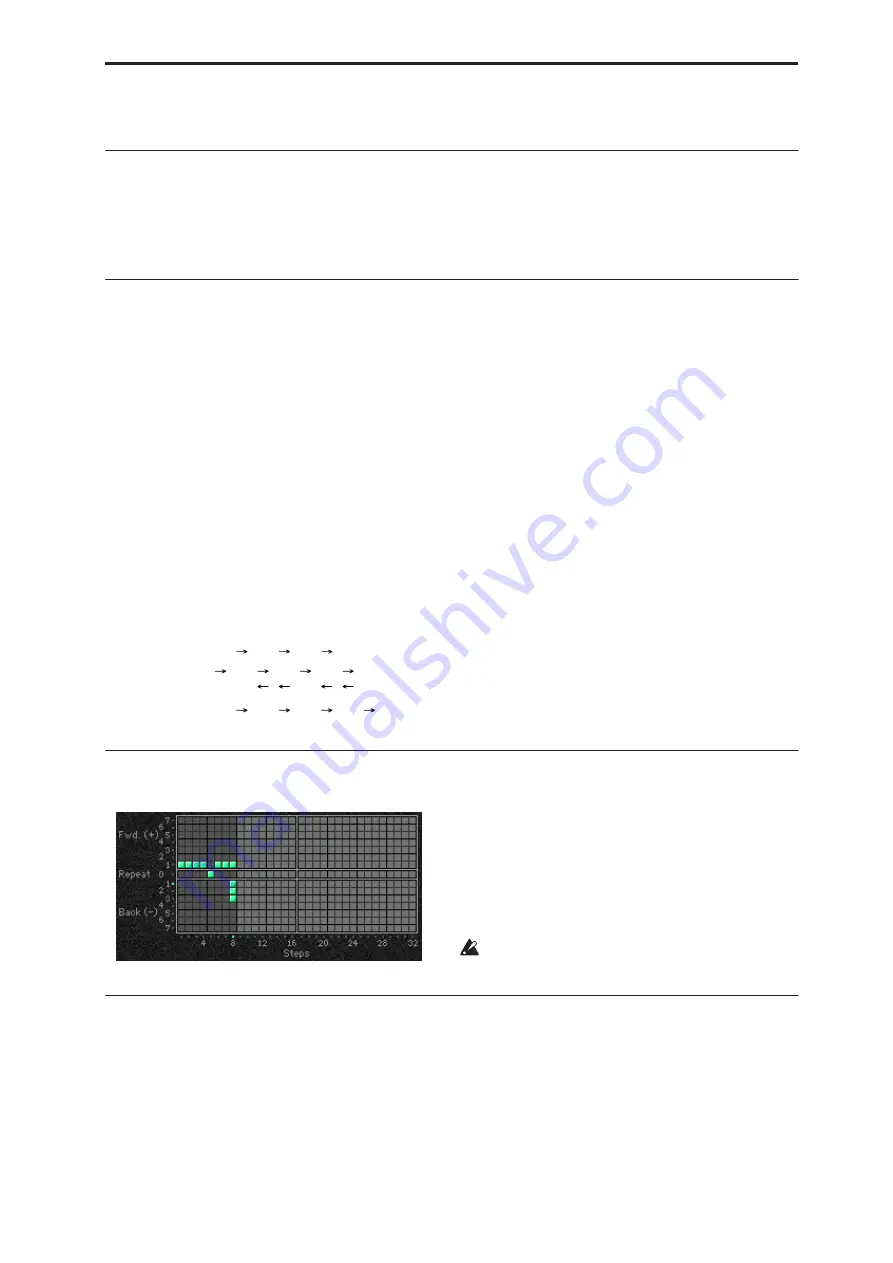
Index Group Overview
917
Index Group
Overview
The
Index Group
controls the order of the pitches as
they are generated from the Note Series, and some
other characteristics that can affect the number of notes
generated at a time.
About Index Patterns
Index Patterns describe a way of moving through the
Note Series in memory and consequently control the
order of the pitches as they are generated. The Note
Series has an index associated with it that indicates the
current position, and the next Index to be generated.
The Index Pattern values indicate how the index will
be moved after generating the Index at the current
position. A positive value moves forward from the
current position; a negative value moves backwards; a
value of
0
repeats a Index. Choices can be made from
“Random Pools” of values as described in detail later
on. When the Phase “Direction” is set to
1: Backwards
,
the values operate in inverted fashion.
Since the first value in the Index Pattern is not used
until after the first Index has been generated, a Index
Pattern of
{1, 1, 1, -2}
will cause the generation of the
first four notes in the Notes Series, after which it jumps
back to the 2nd note in the Note Series and so on.
Note that it is possible to create Index Patterns that will
not move ahead or will actually move backwards,
given that you can start from a position that is
somewhere in the middle of a Note Series by using
either the “Start %” (p.904) or “Beginning/End Offset
%” parameters (p.907) in the Phase Group. If you do
create a Index Pattern that simply stays in one place
(i.e.
{1, -1}
, or
{0}
), a Phase Change will only occur if the
Phase “Length Mode” (p.905) is not set to
0: AC-
Actual
, since in this mode it waits for the end of the
Note Series to be reached, and this will never happen if
there is no forward movement.
A Index Pattern will loop as long as note generation
continues. It normally will not reset to the beginning of
the Pattern unless a new Trigger is received, or the
Phase Pattern has been configured to restart it at the
beginning of certain Phases. This means that a four
step Index Pattern can be looping while an eight step
Velocity Pattern and a twelve step Cluster Pattern are
also independently looping, for example.
Besides using Index Patterns, several other means of
moving through the Note Series are provided. These
options are controlled with the Index Pattern Type
parameter, as described below.
Pattern Grid & Associated Parameters
Index Pattern
A Index Pattern has any number of steps up to 32, with
each step being represented by one column on the grid.
The first column always contains at least one value;
unused columns appear disabled. The 15 rows
represent forward and backward movement from the
current index as each note or cluster of notes is
generated.
Pattern girds cannot be viewed or edited on the
OASYS.
Associated Parameters
Index Mode
[0…2]
0: Pattern
Movement through the Note Series will be controlled
by a Index Pattern constructed in the pattern grid.
1: Random
Causes the pitches to be chosen at random from the
applicable portion of the Note Series. Unlike most
arpeggiators, the random algorithm used here does not
allow notes to happen twice in a row, which sounds
less machine-like and more musical. Once a note has
been chosen, future choices of that note will not occur
until all other notes in the applicable portion have been
chosen.
Note Series:
C4
E4
G4
B4 ....
Index Pattern:
1
1
–2
1
Generated Note:
C4
E4
G4
B4
E4
...
0: Pattern
1: Random
2: Random Walk
Summary of Contents for Electronic Keyboard
Page 1: ...Parameter Guide Parameter Guide ...
Page 2: ......
Page 180: ...Program mode EXi 170 ...
Page 290: ...EXi STR 1 Plucked String 280 ...
Page 572: ...Sequencer mode 562 ...
Page 700: ...Global mode 690 ...
Page 751: ...Insert Effects IFX1 IFX12 Routing 741 Fig 2 3a Fig 2 3b ...
Page 902: ...Effect Guide 892 ...
















































